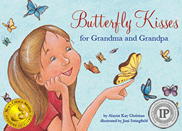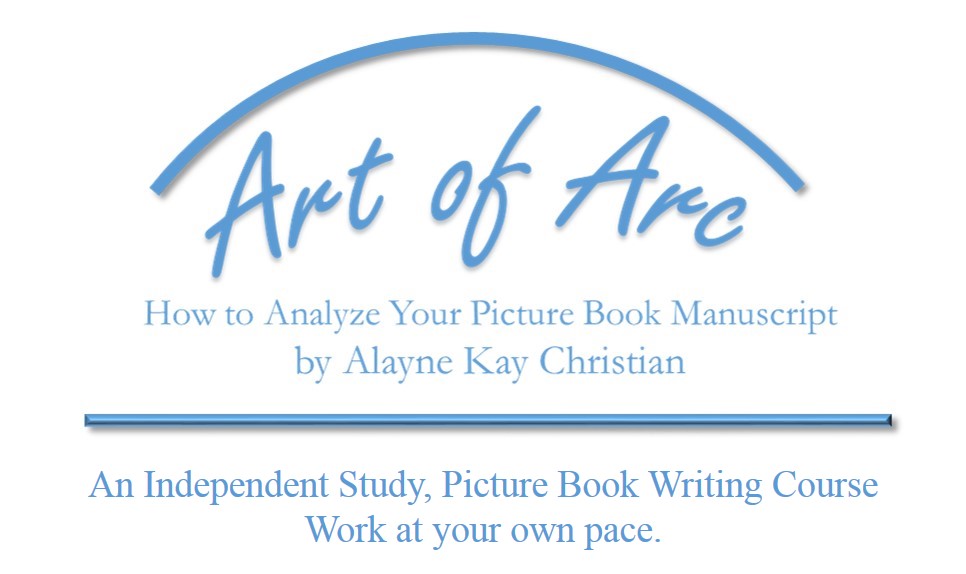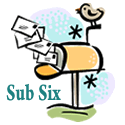This two-part Q&A with Kathryn Otoshi was originally posted way back in 2013. I’m sure a lot has changed for Kathryn since then. But one thing I know for sure is her success continues to grow. I thought it might be fun to bring this oldie but goodie back for all you Kathryn fans. Following is the interview as it appeared in 2013.
Before I get started, I want to give a giant THANKS to Kathryn Otoshi for taking many hours out of her busy schedule to answer my questions and for sharing so much of herself with us in this interview. Today, I am happy to post Part 2 of my interview with Kathryn and even happier to first offer the bonus of Kathryn’s thoughts regarding THE TOP FIVE THINGS THAT MAKE A SUCCESSFUL INDEPENDENT PUBLISHED BOOK.
There are many definitions floating around for “Independent Publisher.” I tend to like the following: Jenkins Group, Inc., the organizers of the Independent Publisher Book Awards, define “independent” as 1) independently owned and operated; 2) operated by a foundation or university; or 3) long-time independents that became incorporated but operate autonomously and publish fewer than 50 titles a year.
Keep an eye out for future posts on independent publishing.
BONUS INTERVIEW QUESTION AND ANSWER
AKC: What are the top five things that you think make a successful independently published book?
KO:
- Write about a story or topic you feel strongly about — First and foremost there must be a real love and passion for the story you are writing about. I’ve always felt that the author must be absolutely fascinated with the story they are telling in order to be motivated to finish it. And also for the reader to be engaged with it as well! Another suggestion: do your research. Do your homework. If you want to connect with your readers, then start connecting with them before your book is published. Be willing to read a draft mock up to whoever your target audience is. I read to classrooms, teachers, booksellers, young kids, and parents to get their feedback on my children’s book. I found that experience invaluable. Then when your book is published, you will need to go out and do author visits. You must feel passionate about your story for you to be able to speak about it over and over, again and again and still keep it real.
- Strong production value — The saying ‘don’t judge a book by its cover’ doesn’t apply to children’s books! With thousands of books for a reader to choose from, having a strong production value with appropriate design does indeed matter. An elegant embossment or appropriately placed foil stamp on a jacket, for example, is never lost on your readers. They might not be able to vocalize about exactly why one book might feel ‘good’ over another, but they will instinctively know that the loving details are in there. Graphic design is key. Bringing on a professional graphic designer for your book to have a strong visual appeal is necessary. If you are independently publishing a book, how your book ‘reads’ across a room or how you package it becomes a deciding factor on if your book is picked up – or not.
- Have a business plan and budget — While it’s true, that most of us agree that writing and illustrating is a labor of love, publishing is a business. You must factor in all aspects when you publish a book. Be willing to take off your creative hat momentarily to look at how much it will cost to properly produce your book. And how much will it cost to properly support your book in the market so that it will have the best chance for success? Editing, designing, distributing, printing, marketing and advertising all have a price tag attached. Other questions that involve your overall budget are: how much should you list the book for? How many copies of the book should you print for the first run? Will you print 2,000 copies of this book? Or 10,000 copies? And if it’s a success, do you have enough buffer in your budget to be able to push the print button right away?
- Marketing strategy and distribution is key — Almost 1/3 of my overall budget is set aside for Marketing. Consider the review copies that need to be sent out. Budgets need to be set aside for contests and awards, for conferences, travel, promotional materials, fliers, postcards, bookmarks, ads, website updates and social media. The list goes on. Decide up front how much you want to set aside to promote your book so you know how much you’ll need to budget for. And although Distribution should probably be in its own category, I put it next to Marketing here for the purpose of consolidation. But in a nutshell, having the right distributor for your company to get you into the right channels can make all the difference in the world for the success of your book. I found John Kremer’s web site very helpful in obtaining an initial list of book distributors to start the researching process.
- Get involved — Go out there and get involved in your book community! Do readings, go to conferences, meet booksellers, join organizations, have coffee with other authors and illustrators. Listen to your peers speak at events. While writing is by its very nature, introverted, the other part of getting your book out there is you getting yourself out there. So move away from your desk, out of your room, through the door and into the world. In today’s book market, part of sharing your story is also about sharing a part of you.
MORE ABOUT KATHRYN AND WRITING ILLUSTRATING
AKC: How many awards have your collective works received?
KO: Collectively over 20, I’d say.
Teacher’s Choice Award, the E.B. White Read Aloud Honor, and the Flicker Tale Award.
AKC: Which came first, the desire to illustrate picture books or the desire to write?
KO: My desire to simply tell a story rises above my desire to illustrate or write a children’s picture book. If I absolutely had to make a decision between the two though, I’d probably choose writing…but whew – it would be a very close call.
AKC: Out of all the books you have illustrated, do you have a favorite? How about those you have written?
KO: I suppose I had fun illustrating ONE the most. In general, I’m a representational illustrator. So for my book ONE, where all the blobs of color are symbolic, this was very unique style for me, but also the most freeing. Originally, One started as a story about differences – physical differences. I thought, “What if I created a story about children with totally different colored faces?” Instead of using white, black, brown skin tones, etc – I could use completely different colors like green, purple, blue and orange! Gradually in my quest to make One as simple as a story possible and boiling it down to its core essence – I ended up making the children’s faces into splotches of colors instead. It was a risk because of the abstraction, but I think that by doing so, I got more leeway to touch upon complex themes and subject matters.
AKC: Where did you get the idea or inspiration for your books?
KO: Mostly from life. “What Emily Saw” is about a day of discovery through the eyes of a little girl. But it’s also based on my own childhood memories. There’s a page spread in there where there’s a hill that transforms into the back of a dinosaur. That’s what I used to imagine when I was growing up! That the hills were the backs of sleeping dinos!
AKC: What advice would you give to writers?
KO: I would say…keep it authentic. And being passionate about your story. It needs to be meaningful to you if it’s going to mean something to someone else. Everything is key to making a children’s book work because everything is so honed down: the text, the illustrations all the way to the graphic design and production of the book. Even the size of the book and the style of the font have a big influence on the overall look and feel of the book. A children’s book is so limited in text, you have to ask yourself – What is each page saying? Is it leading toward my theme? The core ingredients to making a children’s book really solid is to ask yourself a lot of questions about what is working and what is not. Is it really saying what I want it to say in the least amount of words possible? Then before the book is released, it is crucial to read the story to children, parents, teachers, booksellers, librarians – the book lovers in general. They are your audience. Stories are meant to be shared, after all.
AKC: What advice would you give to illustrators?
Before starting the illustration, ask yourself the question: What am I trying to say here? And then ask yourself, What else can I tell the reader that wasn’t in the text? The illustrations are just as important as the text in a children’s picture book. And the pictures should say what the text does not. If your story starts out as “Morris was a lonely mole” …the illustrator has this wonderful opportunity to show us how lonely Morris really is! Is he so lonely, there are cobwebs on his doorknob? Are there briar branches blocking his pathway? A welcome mat that is new and shiny, and never been used? Pictures are a glorious way to engage young readers. Children see and understand images before they ever learn to read. If we get children interested in reading children’s books at an early age, they will become readers for a lifetime. How wonderful! I’m thrilled to be a part of that process.
So for me, it’s making the page come alive. I’m still learning how to do this, by the way. It takes all my experience about composition, leading the eye to where you want it to go, using gesture, POV, lighting, values…and finally the x-factor — your own style, which will summon the page and bring your characters to life.
Through a story, if you are able to create something that influences a young reader in some positive way, however minor – to me, that is true success.
AKC: Do you have any projects in the works that you are able to tell us about?
KO: I am currently working on a chapter book called “Peter Dobb and the Wondrous Pod” and then two more picture books. I’m coming up with ideas for a graphic novel to pitch in a year. Just recently, I’ve started working on a short screenplay which deals with love, loss and memory.
Please read INTERVIEW WITH KATHRYN OTOSHI, PICTURE BOOK AUTHOR/ILLUSTRATOR AND SUCCESSFUL INDEPENDENT PUBLISHER – PART ONE for Kathryn’s bio with photo, a list of her published books with links, and a link to KO Kids Books.
This concludes my interview with Kathryn Otoshi. I hope you have found it as informative as I have. With one final thank you to Kathryn, we are done.













